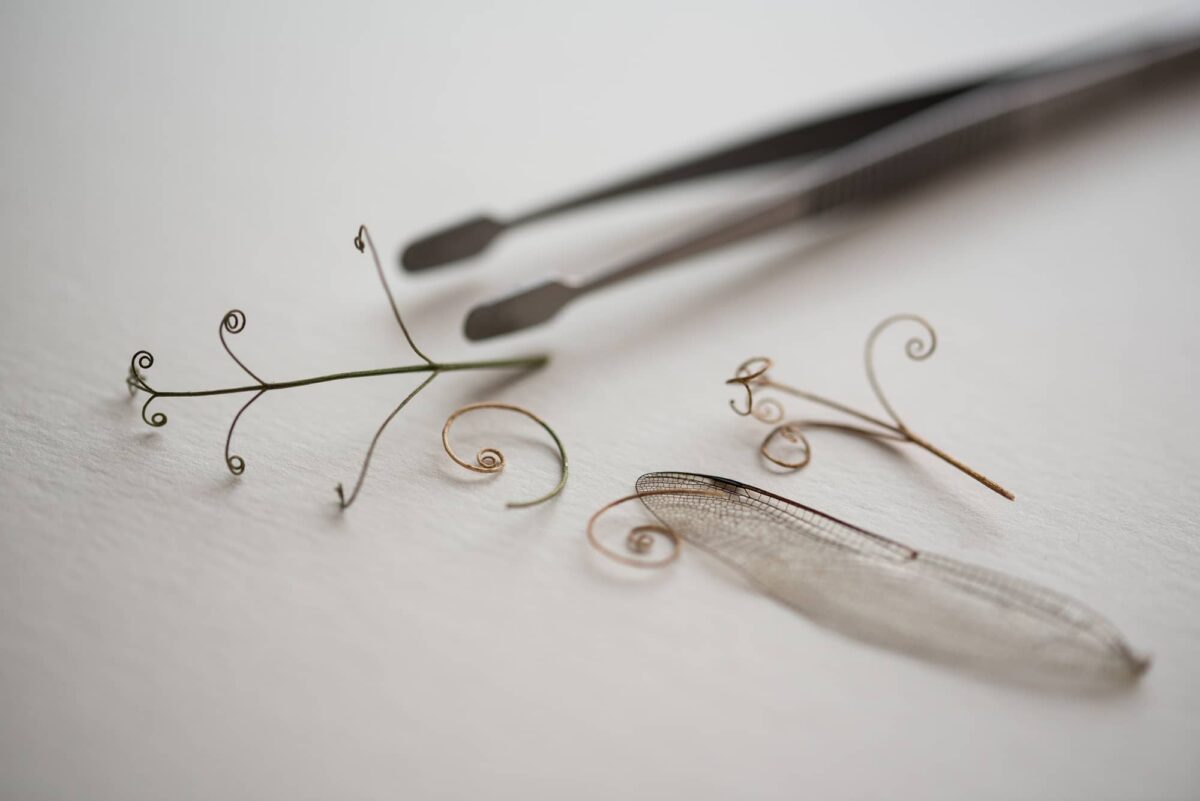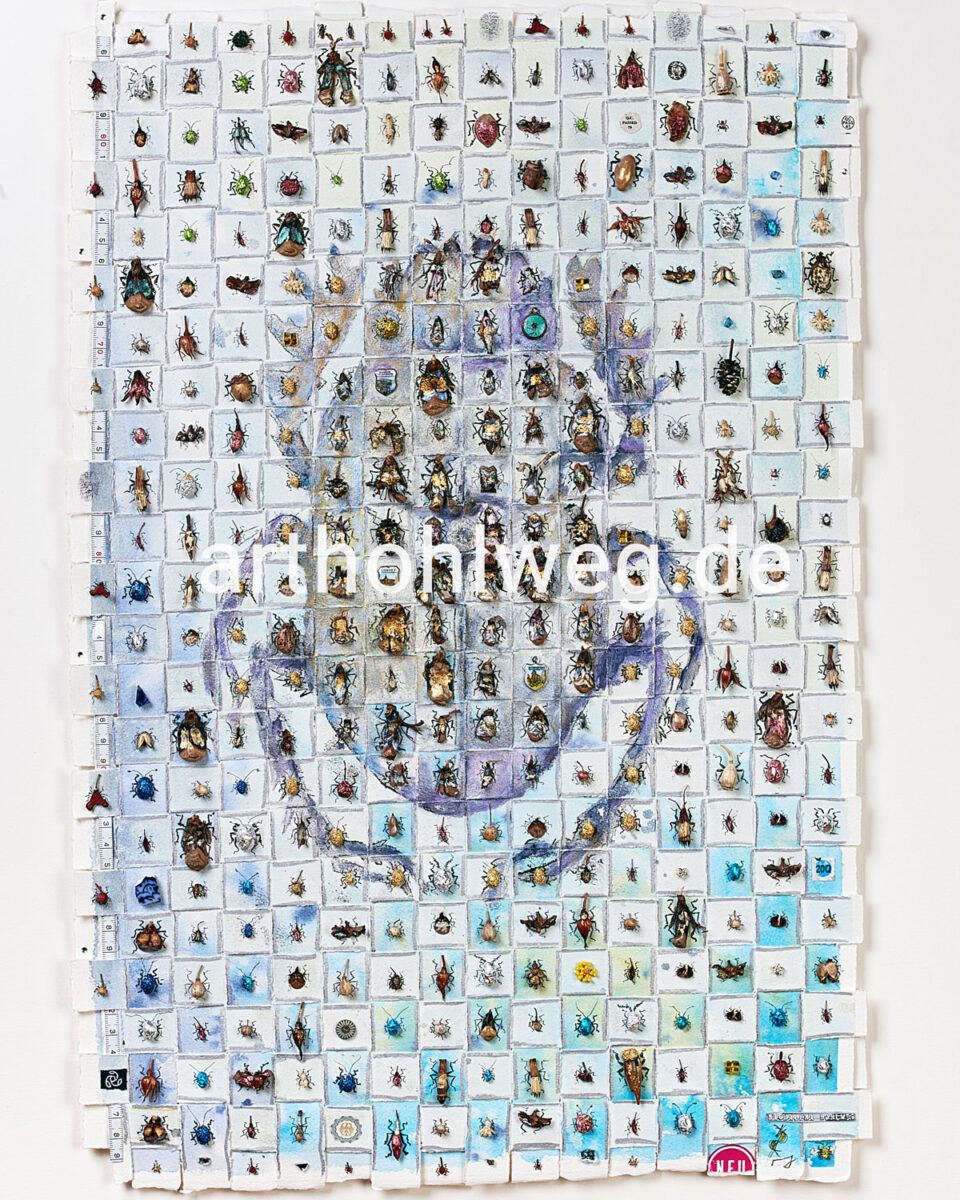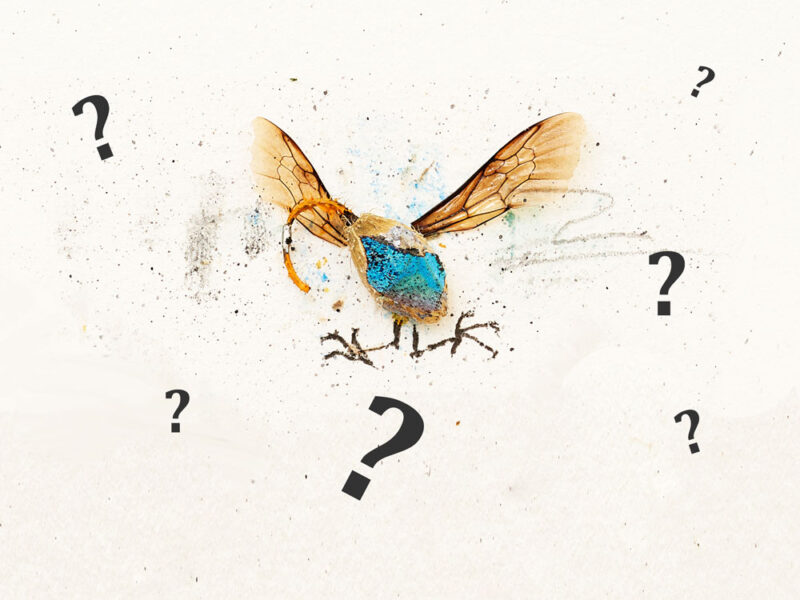Here I answer the most frequently asked questions about my work
1. how did your idea to create these unconventional works come about?
I find it difficult to give a concise answer. How much time do you have? I’ll try the shortest possible version first:
One of my favorite sources of inspiration is to walk through the world as if I had never seen it before. I go outside my front door and resolve to set aside any judgment, any knowledge about my surroundings. It’s not easy, but it’s worth the effort. Just give it a try if you are also looking for new ideas. Maybe you’ll find out what I did: Even when it comes to the weather, it can be difficult not to want to evaluate it. It gets even more interesting when I pretend I’ve never seen a tree, a house, a leaf… Please tell me how it goes! I can barely hold out for 10 minutes. Nevertheless, the attempt alone opens up new perspectives.
Here is the more detailed answer:
because every new development naturally needs a learning phase and multiple experiments – whether it’s art or other areas such as technology, science or whatever. So of course I also spent a long time exploring artistic techniques and different materials. In order to develop something completely new, beyond what I had learned, I had to break away from role models and learned paradigms. I took the risk of taking completely unknown paths and freeing myself from fixed ideas.
Because when I was looking for my own artistic point of view in the 90s, I was confronted with the statement that the development of art was linear. What was meant by this was that the possibilities of art were, so to speak, gradually worked through in the course of human history until everything was represented, everything examined, everything said, everything done.
Realism in particular was considered to have been completely exhausted by the beginning of 2000. For example, realistic depictions of the human nude were considered to have been completely exhausted. In fact, the number of female nudes in art history is probably almost impossible to keep track of. So why create any more?
There are good reasons for this: If only because most nudes, mostly created by male artists, represent passive objects.
My most recent experience is an example of this: I visited the Christian Daniel Rauch Museum in Bad Arolsen. The impressive statues by the classicist sculptor and some of his sketches are displayed there in a light-flooded room, as if in a depot. The white figures flood the room with godlike radiance. The atmosphere in this museum is very impressive, almost uplifting. I saw myself surrounded by noble personalities, mostly of impressive stature and radiant faces – what beautiful, imposing figures (only Goethe is said to have been dissatisfied with the design of his monument, which stands there. And indeed, his belly does not exactly bulge out flatteringly under his housecoat). Otherwise, the room is completely illuminated by heroic figures.
And why am I telling you this? Because among all the heroes in victory or thinker’s pose, one statue is quite different: the tomb of Queen Louise of Prussia. She is the only reclining figure in the illustrious assembly. She radiates peace and beauty and perfect purity. The powerful poses are reserved for the many male figures around her.
And your view on this? What view do you have of things? I think that every new work brings new insights. The millionth copy of the copy of the copy, on the other hand, is probably really boring.
Of course, copying is quite helpful for practicing purposes. And when we are satisfied with our own copy? Then it’s time to develop our own ideas.

2. what is the lifespan of the collages made from found objects?
My earliest works with plant finds are now almost 20 years old. I have noticed that some of the colored pencils I initially used have faded more over the years than some of the plant finds. I have therefore only been working with real pigment colors for a long time now. I sometimes dab the found objects with high-quality, long-lasting watercolors to highlight accents. These colors also bring stability to some very tiny elements. Many of the elements I use do not require any treatment at all. Like most artistic works, the exhibits should not be exposed to direct sunlight. Should a repair to the work or the frame be necessary, I can usually fix it myself without any problems.
The frames always require a spacer strip so that the work is not crushed by the glass. It should therefore be noted that many standard frames cannot be used. The right framing requires experience. I also had to learn a lot from my own mistakes. That’s why I only ever hand over my works ready-framed.
3. are the finds preserved?
I allow the glue to soak into particularly fragile finds. This has a preservative effect. I pay particular attention to dust-proof framing. The framed exhibits are sealed all around behind the glass. Incidentally, I usually use anti-reflective glass, which is also provided with UV light protection.
4. is a special adhesive used?
I use a common, acid-free paper glue. If you’re wondering why there are virtually no traces of it to be seen in my work, it’s because of the precision of my approach. It’s a matter of practice.

5 How long does it take to complete such a work?
That’s not an easy question either. I often work on several scenes that are independent of each other. I rarely create a work in one go. As soon as I discover a suitable piece in my collection, I add to the work in progress. I move some elements back and forth a few times until I am convinced that they have the right effect and finally fix them in place with glue. Of course, it also takes time to collect the found objects. However, I never set out with the intention of looking for new elements. It’s more the case that I always discover something in passing, which I pick up and stow away somewhere – there’s always room for the little finds in my jacket pocket or wallet. I’m rarely interested in anything larger than about one square centimeter.
Very briefly summarized: It takes me an estimated 3 hours to 3 years to complete a work.
6. where can I buy your works?
I will be happy to send you your own original directly from my studio. Please send inquiries by email to galerie@arthohlweg.com
7. do you also design the collages from found objects on request?
On request and depending on the individual case. I will be happy to check whether I can match your wishes with my own ideas.
Subscribe to my personal newsletter so that I can keep you up to date even more easily.


